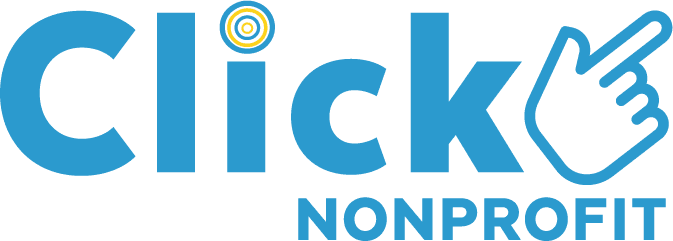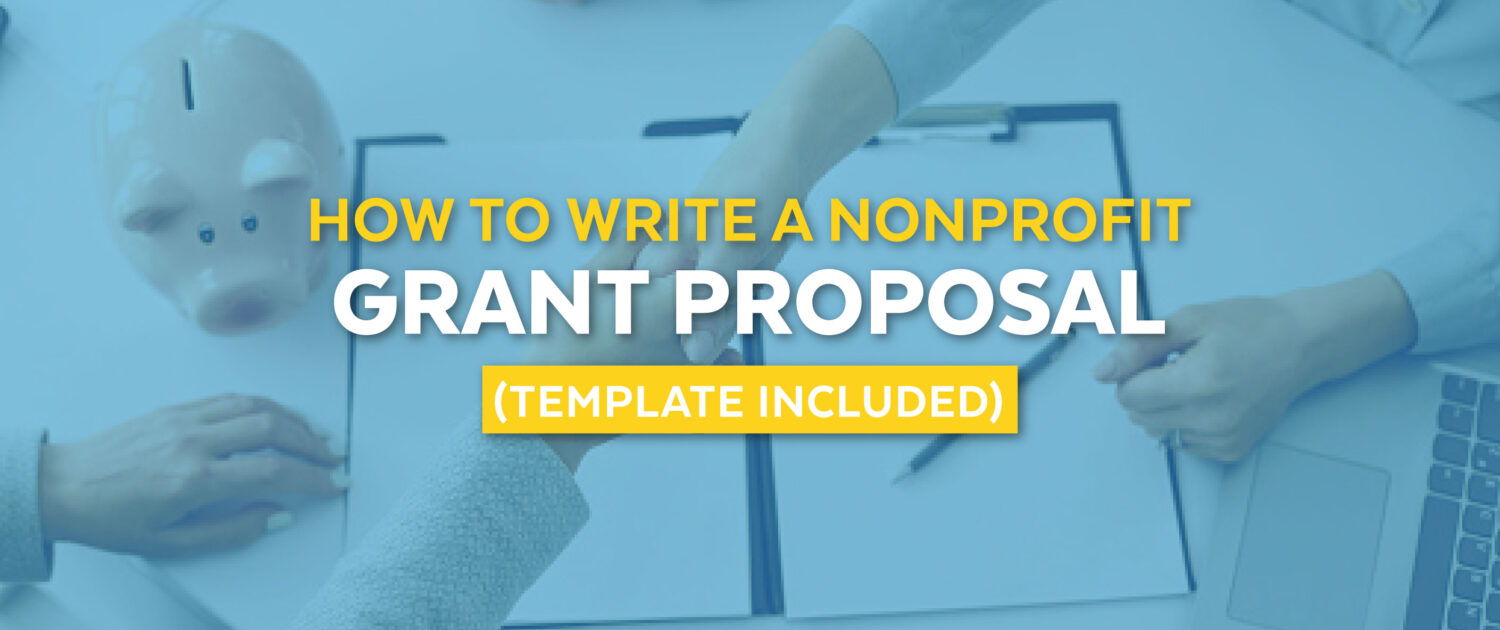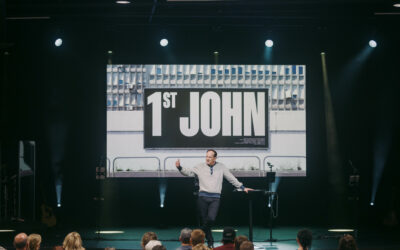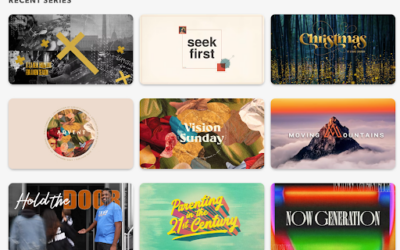If you serve within the nonprofit industry, you are likely aware of the value of writing compelling grant proposals. Nonprofit grants can meaningfully supplement your organization’s resources and equip you to have a greater impact on your beneficiaries.
However, applying for grants can be tricky. Many other organizations are requesting the same funds, and it can be challenging to set yourself apart. You must communicate your mission, goals, and strategy in a way that inspires action. And you must do so for someone who is likely unfamiliar with the depth or significance of the need you serve.
In this post, we outline the key components of a nonprofit grant proposal and the optimal content included in each section. At the bottom of the page, we have provided a grant proposal template for your convenience. Read on for an in-depth look at what this writing process entails.
Letter of Inquiry
A valuable first step in your grant proposal writing process is composing a letter of inquiry. This serves as a condensed version of your full proposal, outlining the key elements of your plan for busy readers. Thus, submitting a letter of inquiry can generate interest in your proposal and can educate you on the funding organization’s goals.

A letter of inquiry is just what it sounds like – a letter detailing your need for funding and inquiring about the grantor’s expectations from its applicants. If the organization expresses a desire to hear more from you, you can submit the full-length version of your proposal. Because of this, it’s best to keep the letter of inquiry fairly short (within 2-3 pages). The components of your letter of inquiry are as follows:
Introduction
A brief summary of what is to be found in the rest of the letter, including a one- to two-sentence description of your intended project. Afterwards, thank the reader for taking the time to review, and provide the context needed to understand the information that follows.
Organizational Identity
Here, you have the opportunity to illustrate exactly who you are and what you do. Give the reader a glimpse of the mission and values of your organization, the work you do on a regular basis, and the impact you hope to accomplish in the future. Lastly, show how the grant for which you’re applying is relevant to your mission.
Statement of Need
In this section, you must communicate the need that exists among your beneficiaries. What challenges are facing them at this point in time? Has any work been done to mitigate the issues? What barriers currently exist to achieving better outcomes? By answering these questions, you set the stage for why the work you’re doing matters and why the grant is necessary for its success.
Project Strategy & Methodology
It’s not enough to show that a problem exists and that you have the desire to fix it. You must also demonstrate the well-formed and actionable plan that is guiding your goals. In this section you will outline the primary phases of your project plan, the key actions involved, and your intended timeline. Additionally, include your budget and illustrate your funding needs.
Summary
Lastly, summarize the contents of this letter and conclude with a request for financial support. Reiterate the grant’s relevance to your organization’s values, capabilities, and focus area. Then offer to outline your mission, strategy, and goals in further detail if the grantor is interested.
Components of a Grant Proposal
Once you’ve sent your letter of inquiry and received requests for further information, it’s time to submit your full grant proposal. While the requirements of every grant application are unique, most will include some variation of the following seven key elements.
1. Cover Letter
The first component of a nonprofit grant proposal is the cover letter, which is a one-page overview addressing:
- The project goals and plans
- The significance of the work being done
- How your goals align with those of the grantor organization
- The need for additional funding and the impact the grant can have
- A table of contents
The cover letter serves as an introduction to the entire grant proposal. You want to provide enough information to let readers understand the work being done and the background of your organization. However, don’t overload them with too much detail. Simply peak their interest and inspire them to read the rest of your proposal.
2. Summary
Following your cover letter is the summary. This should be a high-level overview of the project you intend the grant to fund. Detail the results you expect and the reason the work matters. Then, explain how your organization is qualified to solve this problem and how it aligns with your past and current work.
You’ll have plenty of space to go into deeper detail throughout the rest of your proposal. As a result, you’ll want to keep the content in this section under one page.
3. Organizational Identity
Similar to this section in your letter of inquiry, this is the moment in which you outline the values and mission of your organization. Additionally, address the communities you serve and the impact you hope to have. Here in your official grant proposal you have the freedom to provide a lengthier, more in-depth look at what makes your organization unique.

Discuss your service goals and show your reader the dreams you have for future work. Illustrate the capacity this project has to further your desired outcomes. By providing evidence of past successes, you demonstrate your ability to bring this project to completion. In doing so you can prove that work of your organization is vital to the communities you serve.
Lastly, consider providing a brief introduction to the primary employees of your organization – specifically those in closest proximity to the work enabled by this grant.
4. Statement of Need
Once again, the statement of need in your grant proposal is a more in-depth version of that found in your letter of inquiry. In this section, the grantor is looking to identify the most meaningful work that can be funded. Thus, it’s vital that you provide a realistic picture of the need that currently exists. Keep in mind that while you are closely familiar with the struggles of your beneficiaries, those outside of your organization may not be. So, don’t hesitate to discuss the need in detail.

And don’t stop there. Think of your statement of need as a statement of opportunity. Certainly, the issue you’re addressing is not a lost cause. You have an actionable plan to solve it! Highlight your ability to make a change and your enthusiasm for the work that will be done. And seek to transfer your energy to those reading your grant proposal, showing them how they can be part of making a change.
5. Project Strategy & Methodology
You’ve provided plenty of context to understand the problem and the role of your organization in solving it. Now, your readers are ready to dive into the details of your project strategy.

Don’t be afraid to dive in deep in this section! The more informed grantors are about the work they’re funding, the more comfortable they will feel. The primary components of your strategy are listed below:
Outcomes
What outcomes do you hope to see? Think back to the need you’re addressing. Then use the need to find the solutions that are most relevant to your beneficiaries and that are within your power to enact.
Objectives
In order to realize your desired outcomes, you need to have high-level objectives in place. What needs to be accomplished in order for your work to have the impact you’re seeking? List the overarching goals that guide the course of the project.
Key Actions
Now, ask yourself what individual actions will lead to the success of your objectives. Think of these as sub-goals, the vital elements of your plan without which meeting your objectives will not be possible.
Internal Stakeholders
Who are the team leads responsible for each key action or objective? Who has ownership over the most significant facets of the work being done? If you included employee introductions in your organization identity, you can now go into further detail on the specific project contributions of each team member.
Schedule
Remember SMART goals. In order to succeed, your goals must be specific, measurable, achievable, relevant, and time-based. Your grantors will want to know when they can expect to see results and how you plan to move progress along. Thus, clearly outline your deadlines for each of your outcomes, objectives, and key actions. The more detail the better!
Budget
One of the most important components of a nonprofit grant proposal is the budget. Without this, how can the grantors guarantee the funds provided will be maximized? Once again, include as much detail as you are able. Use this section as an opportunity to demonstrate the resources currently being used, the necessity for further funding, and the specific elements of your project that will be enabled by the support you receive.
6. Evaluation Method
Here, describe the metrics that you plan to use to evaluate the success of your project. Take into account your desired outcomes, objectives, and key actions. By the end of the project, you should be able to clearly identify the kind of success achieved at each level.

When developing your evaluation strategy, consider the following questions: How will you prove the value of the work you’ve done? What defines success for this project? How will you demonstrate that you put the grant to good use, that you produced the desired change? As you write this section of your grant proposal, illustrate your commitment to efficiency and transparency.
7. Conclusion
At the end of your nonprofit grant proposal, provide a short summary reiterating the above content. Remind your readers of the relevance of the work you’re doing, the impact you envision, and your ability to see it through. Then, offer to follow-up with any additional desired information, and thank them once again for committing their time to you.
Where to Find Grants for your Nonprofit
Countless organizations – both governmental and private – provide grants for nonprofit organizations that align with their core values. To help you locate the right grants for your organization, we’ve provided the following resources:
Instrumentl
Instrumentl is a website that matches nonprofits with relevant grants and helps them apply for those they select. Read more about what Instrumentl can do for your funding goals, or browse their available grants by focus area and location here.
GrantScape
GrantScape is a large database of grants available to NPOs, containing nearly 180,000 funding organizations. Check out the grants available now.
The Google Ad Grant
One helpful resource for nonprofit organizations is the Google Ad Grant. This is a $10,000 monthly grant awarded to eligible churches and nonprofits, empowering them to run Google Search ads online. The video below explains more about this.
Organizations like Click Nonprofit will even apply to this grant on your behalf, at no charge. Once you’ve acquired the grant, Click Nonprofit’s team of ad managers will set up and optimize your ads, helping to maximize your awareness goals. Schedule a free strategy call to find out how the Google Ad Grant can serve you.
Nonprofit Grant Proposal Template
Click for a free downloadable Grant Proposal Template.
Keep in mind that each funding organization is unique and may require alternative elements in their grant applications. This template is designed to serve only as a general guide for applicants. Thus, be sure to customize your nonprofit grant proposal to the specific needs of the grant for which you are applying.
Adjusting your proposals to align with each grantor may be slightly more time consuming. However, it is essential for success. Check out these tips on streamlining your grant management process to ensure you maximize your time when submitting proposals.
We hope this post has been helpful in equipping you to write nonprofit grant proposals with confidence! You now know the key elements of the letter of inquiry, the cover letter, and the grant proposal itself. And you have a greater awareness of organizations that can help you acquire the right grant for your nonprofit. Now, it’s time to put this knowledge into action and start writing effective nonprofit grant proposals!




